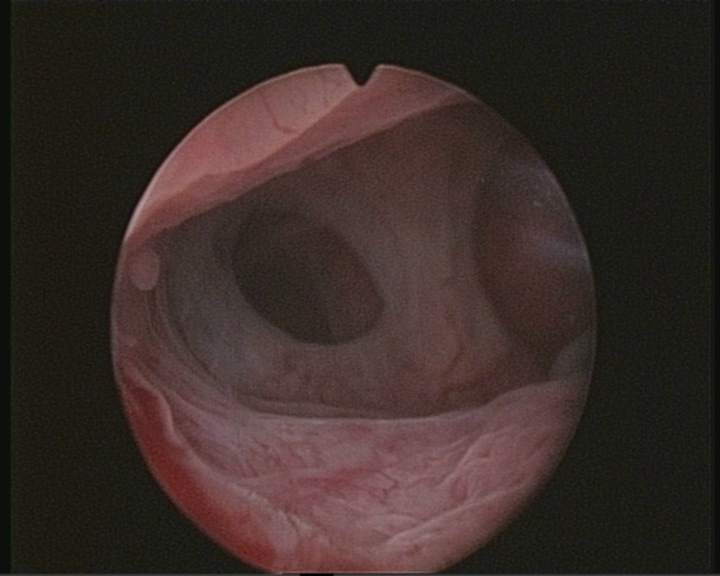The uterine cavity is a virtual cavity that needs to be relaxed for proper hysteroscopic evaluation. Distension of the uterine cavity is directly related to the intracavitary pressure of the distension media used and the presence of factors that alter the normal myometrial distention capacity, such as presence of fibroids or multiparity.

The minimum pressure required for visualization of the uterine cavity is estimated at about 40 mmHg when normal saline is used as a distension media. A pressure of about 75 mmHg is needed for proper separation of the uterine walls. Pressures above 100 mmHg favor over distention and permeability of the distention media through the fallopian tubes into the abdominal cavity.
In modern hysteroscopy, the use of systems that allow pressure and flow control are commonly used for performing operative hysteroscopy. However, in office hysteroscopy is still performed in many centers with the use of pressure cuff systems or simply by gravity.
Good read